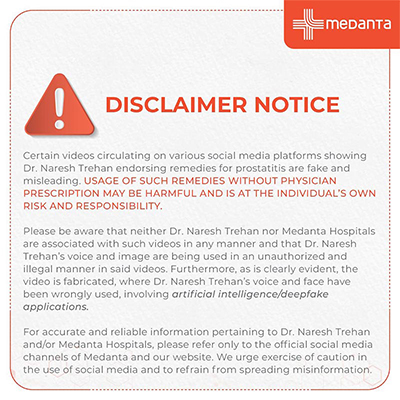8 Reasons Why Laparoscopy for Kidney Stones Is Better Than Open Surgery

TABLE OF CONTENTS
Kidney stones are no joke. If you've ever had one, you know the pain is nearly unbearable. When stones become too large to pass on their own, surgery must be undertaken. Earlier, doctors always used to do open surgery for kidney stones, but laparoscopic surgery for kidney stones changed everything. It is less invasive, has faster recovery times, and is safer. This blog will discuss why laparoscopy for kidney stones is the best option and how it is better than open surgery.
Laparoscopic Surgery: What It Is
Laparoscopy is a minimally invasive surgery where the kidney is accessed, and the stones are taken out with small cuts. A tiny camera (laparoscope) is placed inside, and the surgeon has a good look at the stones without having to cut the whole abdomen open. Laparoscopy is faster and safer compared to open kidney stone surgery, which is done with a big cut and a long recovery time.
How is Laparoscopic Surgery Done?
Here’s the usual process of laparoscopic surgery:
Preparation: Anesthesia is given to the patient so that the procedure is painless.
Incisions: Minuscule incisions (usually three or four) in the belly are performed.
Insertion of the Laparoscope: A camera is inserted through one of the incisions, showing a high-definition image.
Stone Removal: Stone-removing instruments are utilised to remove the kidney stones.
Closure: Incisions are closed with fewer stitches, minimising scarring and recovery time.
This method reduces complications associated with open surgery to remove kidney stones and results in an early recovery to normal life.
Health Problems Treated with Laparoscopy
Laparoscopy is not exclusive to kidney stone treatment—laparoscopy is performed extensively in nearly all urological and kidney issues. Here are the most relevant health conditions that you can efficiently treat with laparoscopy:
1. Complex or Large Kidney Stones
For those patients with kidney stones that are too big or too far in, laparoscopy to remove kidney stones is a preferred option. In contrast to traditional techniques involving long recovery or multiple surgeries, laparoscopic surgery provides exact removal with little damage to the surrounding tissue.
2. Kidney Cysts
Renal cysts are fluid-filled sacs that can occur on the kidneys and cause pain, discomfort, and even sometimes failure of the kidneys. Large cysts are typically drained or surgically excised by laparoscopy and cure the symptoms along with a significant improvement in kidney function.
3. Ureteropelvic Junction (UPJ) Obstruction
UPJ obstruction is what happens when there is a blockage of the juncture of the kidney and ureter (the tube through which urine moves from the kidneys to the bladder). This leads to pain, infection, and diminished kidney functioning. Laparoscopy provides a means for excision or diversion of obstruction without a large cut.
4. Kidney Tumours
For small, localised kidney tumours, laparoscopic removal can be employed to resect the tumour with minimal disruption of healthy kidney tissue. This is especially helpful in the treatment of early kidney cancer because it maintains normal kidney function.
5. Chronic Kidney Infections
Recurrent kidney infections due to structural problems may require surgical intervention. Laparoscopy may be used to fix underlying problems, such as narrowing of the ureter or kidney drainage problems, to prevent repeated infections.
6. Nephrectomy (Kidney Removal)
In extreme conditions when a kidney is badly damaged or cancerous, laparoscopic surgery is employed to have the kidney removed. Laparoscopy reduces post-operative pain and recovery time compared to open kidney removal surgery.
Laparoscopic procedures are revolutionising kidney and urological procedures and are providing patients with a safer and more effective alternative to open surgery for kidney stones.
Main Benefits of Laparoscopic Surgery
Laparoscopic surgery for kidney stones offers a lot of benefits which make laparoscopy the preferred option compared to open surgery for kidney stones. Here are some of the main benefits of laparoscopic surgery for kidney stones:
1. Smaller Incisions, Lesser Pain
Compared to open surgery to remove kidney stones, which requires a large cut, laparoscopy requires only 3-4 minor cuts. This reduces pain significantly, and post-operative recovery is much less inconvenient. [1] Most patients experience little or no discomfort, which can be easily managed with minimal painkillers.
2. Faster Recovery
As laparoscopy for removing kidney stones is a minimally invasive procedure, there is minimum trauma to the body. Patients can return to their normal activity in one or two weeks, whereas open surgery for kidney stones takes four to six weeks to recover fully. [2]
3. Less Scarring
Laparoscopic surgery is done using small incisions, which leave very small, nearly imperceptible scars. Open surgery to remove kidney stones, on the other hand, leaves a visible, long scar. Laparoscopy is therefore a better choice for those who are body-conscious.
4. Lower Risk of Infection
Open wound surgeries have an increased risk of infection as they are large in size and slow to heal. [3] As laparoscopic surgery for kidney stones is conducted by small cuts, there are fewer chances of infections.
5. Lesser Loss of Blood
One of the major disadvantages of open surgery to remove kidney stones is undue bleeding, at times requiring a transfusion of blood. Bleeding is minimised by laparoscopic surgery and therefore is safer, particularly in patients with coexistent medical illness.
6. Reduced Hospital Stay
The patients treated with laparoscopy for kidney stones usually get discharged within 1-2 days, while open surgery needs a 5-7 day hospital stay. Not only is this quicker recovery but also saves overall hospital costs.
7. Faster Return to Work and Normal Life
For people who work and are busy, laparoscopy is a time-efficient solution. With fewer days of recovery, you'll be back on the job and to normal activity much faster than with open surgery for kidney stone removal.
8. Lower Overall Treatment Cost
At an initial glance, laparoscopy for kidney stones cost might appear to be greater than open surgery. But considering shorter hospital stays, less use of painkillers, and fewer complications during surgery, the overall cost usually proves higher. The long-term advantages make laparoscopy economical.
Clearly, laparoscopy for kidney stones is a better procedure than open surgery for kidney stones in nearly every way.
Recovery and Care After Surgery
Recovery from laparoscopy to remove kidney stones is easier and faster than it is with open surgery. This is what happens:
Immediately After Surgery
Hospital Stay: Most patients are released within 24-48 hours unless there are complications.
Pain Control: Pain is to be expected but controlled by pain medication given or over-the-counter pain medicine.
Diet: Clear liquids are initiated initially and advanced to a regular diet as the digestion calms down.
First Days Post-Surgery
Fluids: Drink the right amount of water to remove any residual bits of the kidney stone and prevent future growth of the stone.
Activity Level: Walking is encouraged to prevent blood clots, but don't exhaust yourself.
Wound Care: Minimal care is needed for the small incisions, but you need to dry and clean them will avoid infection.
First Two Weeks
Gradual Return to Activity: Most patients can go back to work within 7-14 days depending on the physical demands of the job.
Dietary Modification: The patient is advised to a low-sodium and oxalate-free diet (e.g., no chocolate, nuts, or spinach) to avoid the formation of new stones.
Follow-Up Visits: Follow-up visits on a regular basis help to heal properly and preserve kidney function.
Long-Term Recovery
Complete Healing: Full-body recovery can take 4-6 weeks, but patients can resume normal activities much sooner.
Preventing Recurrence: Physicians can suggest changes in lifestyle such as more water intake, food modifications, and regular medical examinations to avoid the recurrence of kidney stones.
Physical Activity: Patients can resume normal exercise routines, including weight lifting and strenuous exercise, after 4-6 weeks.
By adopting these post-operative practices, patients can easily recover and lower the risk of complications following laparoscopic surgery for kidney stones.
Final Words
If you’re dealing with large or stubborn kidney stones, laparoscopy for kidney stones is the best modern solution. It offers faster recovery, less pain, and fewer risks compared to open surgery for kidney stones. While the cost of laparoscopy for kidney stones cost may vary, the benefits far outweigh the expenses, making it a worthwhile investment for your health. Visit your nearest super-specialty hospital to learn more about the procedure and its prerequisites.
FAQs
How long does it take to recover from laparoscopic surgery for kidney stones?
Most of the patients take only 1-2 weeks, whereas 4-6 weeks is needed with open surgery.
How painful is laparoscopic surgery to remove kidney stones?
There is much less pain than is involved with open surgery to extract kidney stones. Most patients can deal with simple analgesics.
How successful is laparoscopy in removing kidney stones?
Success rates are similar to open surgery for kidney stones, with fewer complications and less recovery.
What is the average cost of a laparoscopy for kidney stones?
Hospital costs are variable, but it is generally cheaper in the long term with shorter hospital stays and faster recovery.
When can I return to work after laparoscopic kidney stone removal?
Most patients resume work within 1-2 weeks, compared to 4-6 weeks with open surgery to remove kidney stones.






